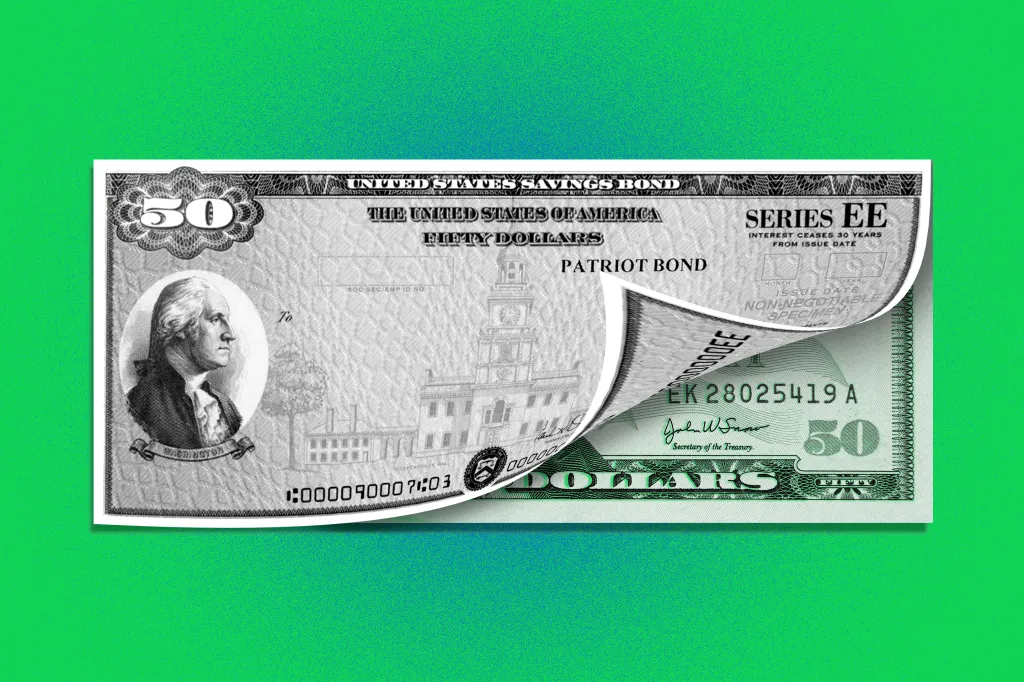If you have an old savings bond that your grandma gifted you for a birthday or graduation, the first order of business is to say thank you. Your grandmother gave you a government-backed investment with guaranteed returns—which is more than many investments can offer. But now, you might wonder when and how to turn that savings bond into cash.
Here’s the good news: Cashing in savings bonds is generally an easy process. The exact process will depend on the type of bond, but either a local bank or the Treasury Department can help you transform grandma’s gift into cash in hand.
What are savings bonds?
A savings bond is a type of debt security issued by the federal government to support its spending and investments. When you purchase a U.S. savings bond, you’re lending the government money. In r
eturn, the government agrees to pay you back, with interest, on a specific date (known as the bond’s maturity date).Over the years, the Treasury has issued several types of savings bonds. While some are no longer available, it currently issues two types: Series EE and Series I.
Series EE savings bonds
You purchase Series EE savings bonds at face value, and after 20 years, their value doubles. They continue to earn interest for 30 years, at which point the bond matures and stops earning interest.
You can buy Series EE bonds electronically via the TreasuryDirect website and purchase a maximum of $10,000 per year.
Series I savings bonds
Series I bonds hedge against inflation and work differently than Series EE bonds. The interest rate on these bonds has a fixed plus a variable component adjusted semiannually, so your interest rate can adjust every six months as long as you hold the bond. And while these savings bonds mature after 30 years, you can cash them in earlier. They’re illiquid or not eligible for redemption for the first year of ownership. If you cash them in between years 2 through 5, you’ll pay a penalty of three months’ interest.
Series I bonds can be purchased electronically or with your tax refund. The maximum you can buy in one year is $10,000 in electronic bonds and an additional $5,000 in paper bonds using your tax refund.
Savings bonds and maturities
| Savings bond series | When they mature |
| Series I | 30 years but can be redeemed as early as years 2 through 5 with penalty |
| Series EE | 30 years |
| Series HH | 20 years |
| Series A, B, C, D, E, F, G, H, J, K | Bonds from these series are no longer issued or earning interest but may be eligible for redemption |
The process for cashing in a bond will differ depending on whether you have electronic or paper savings bonds.
How do you cash in savings bonds?
First, you’ll need to determine whether you have an electronic or paper savings bond. Once you know the bond type, you can determine how to cash it in.
Cashing in electronic savings bonds
The process for cashing in electronic savings bonds is simple: Just visit TreasuryDirect and use these steps:
- Log into your TreasuryDirect account. By logging in, you’ll have instant access to your electronic bonds.
- Select your savings bonds. Find and select the savings bonds you want to cash in from your account dashboard.
- Opt to redeem. You should see an option to redeem the bond, which you’ll select.
- Specify how much you’re cashing in. If you’re cashing in part of the bond, specify the amount. If cashing in the entire bond, then select the whole value.
- Choose where to send the money. Select which checking or savings account you want the money sent to and confirm your banking information. This will usually be the bank account you have linked to your TreasuryDirect account.
- Finalize your cash out. Follow any remaining prompts to complete the transaction. Treasury will send the funds to your bank account within a few business days.
Cashing in paper savings bonds
For paper bonds, the process is slightly different and depends on the type of savings bond you have. You can generally cash in paper bonds at most local banks or credit unions. You’ll need to provide identification, and the bank will verify the bonds and your identity before giving you the cash or depositing the money into your account. You also need to cash the bond for its entire value.
If you have a large amount of bonds to cash, or if the bonds are not in your name, you may need to use the services of a Federal Reserve Bank.
Series EE or I paper savings bonds
If you want to cash your paper savings bond at a bank or credit union, you’ll first need to find out if they provide this service. If so, find out how much they’ll cash at one time and what identification or other documents you’ll need to provide.
